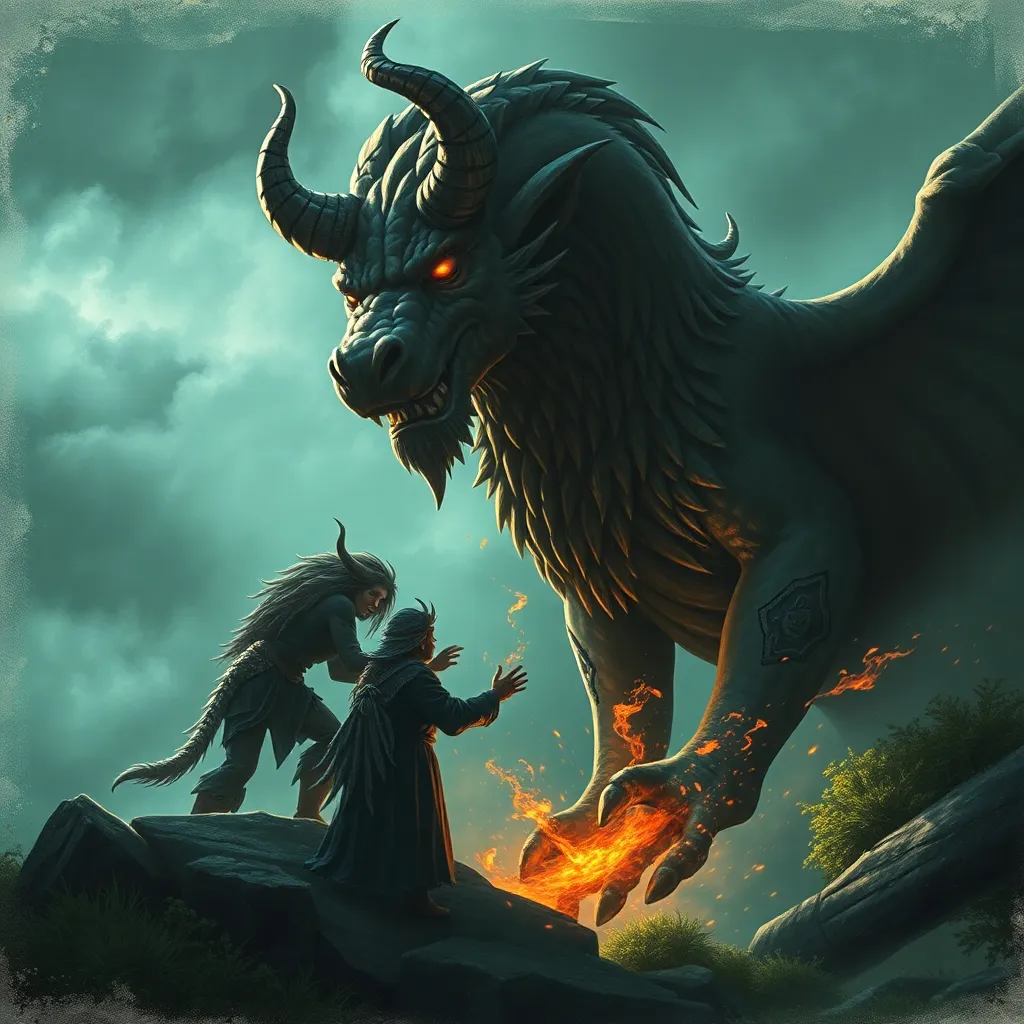Fafnir and the Curse of the Nibelungs
I. Introduction
Fafnir is a pivotal figure in Norse mythology, embodying themes of greed and transformation. Originally a dwarf, Fafnir’s story intertwines with the broader lore of the Nibelungs, a group of mythical beings associated with treasure and tragedy. The Nibelungs are significant in their representation of the consequences of avarice, particularly through the infamous curse that haunts their gold. This article aims to explore the myth of Fafnir and its connections to the Curse of the Nibelungs, shedding light on its enduring relevance and moral implications.
II. Fafnir: The Transformation from Man to Dragon
Fafnir’s origins can be traced back to his family, the dwarf lineage, known for their craftsmanship and connection to the earth’s riches. Fafnir and his brother, Regin, were initially guardians of their father’s treasure, a hoard that included cursed gold. However, the allure of wealth proved too powerful, leading to a tragic transformation.
- Background of Fafnir: Fafnir was once a dwarf who, along with his brother, was tasked with protecting a vast treasure.
- The influence of greed: After acquiring the cursed gold, Fafnir’s insatiable greed drove him to murder his father and claim the treasure for himself.
- Metamorphosis into a dragon: Consumed by his greed, Fafnir transformed into a dragon, symbolizing the destructive nature of avarice.
This transformation is significant as it illustrates how greed can corrupt and dehumanize individuals, turning them into monstrous beings both literally and metaphorically.
III. The Cursed Gold of the Nibelungs
The treasure that Fafnir guarded was not merely wealth; it was steeped in a curse that brought misfortune to all who possessed it. The origins of this cursed gold are rooted in the tale of the Rhinegold, a hoard forged by the Nibelung dwarf Alberich, who renounced love to gain immense power.
- Origin of the cursed treasure: The gold was acquired through treachery and greed, setting the stage for its curse.
- The role of the Rhinegold: The Rhinegold is central to the Nibelung saga, representing the destructive potential of wealth.
- Consequences of greed: Those who sought the treasure often met dire fates, highlighting the moral that greed leads to ruin.
IV. The Role of Siegfried in the Fafnir Legend
Siegfried, also known as Sigurd in some versions of the legend, emerges as a heroic figure destined to confront Fafnir. His journey to slay the dragon is fueled by a mix of ambition, bravery, and the desire to claim the cursed treasure.
- Introduction of Siegfried: He is depicted as a courageous warrior with a noble heart, eager to prove himself.
- Siegfried’s quest to slay Fafnir: Motivated by both the allure of the treasure and the need to rid the world of Fafnir’s menace, Siegfried faces numerous challenges.
- Significance of the dragon-slaying: This act not only marks Siegfried’s rise as a hero but also serves as a turning point in the narrative, reflecting the complex interplay between heroism and greed.
V. Themes of Greed and Betrayal
The myth of Fafnir and the Curse of the Nibelungs is rich with themes of greed and betrayal. These elements serve as cautionary tales that resonate through the ages.
- Greed as a driving force: Fafnir’s transformation is a direct result of his overwhelming desire for wealth, illustrating the corrupting nature of greed.
- Betrayal among characters: The narrative is rife with betrayals, from Fafnir’s murder of his father to the treachery among various characters seeking the treasure.
- Consequences of greed: The downfall of many characters, including Siegfried and others who covet the gold, serves as a stark reminder of the perilous path of avarice.
VI. Fafnir’s Legacy in Literature and Art
The legend of Fafnir has left an indelible mark on literature and art throughout history. From medieval texts to modern adaptations, the story continues to captivate audiences.
- Depictions in medieval texts: Fafnir appears in the “Völsunga saga” and “Nibelungenlied,” where his story is interwoven with themes of heroism and tragedy.
- Modern adaptations: The tale has inspired countless adaptations in literature, film, and music, showcasing its timeless appeal.
- Lasting impact in popular culture: The Curse of the Nibelungs remains a potent symbol of the dangers of greed, influencing contemporary discussions on morality and wealth.
VII. Comparative Analysis with Other Mythologies
Fafnir’s story shares similarities with dragon myths across various cultures, revealing universal themes of greed and transformation.
- Similarities with other myths: Many cultures feature dragons as symbols of chaos and greed, including Beowulf’s Grendel and the Chinese dragon myths.
- Universal themes: Tales of transformation through greed are common, emphasizing moral lessons about the consequences of desire.
- Insights from comparative mythology: Exploring these parallels can deepen our understanding of human nature and the archetypal narratives that shape our societies.
VIII. Conclusion
Fafnir’s narrative serves as a poignant exploration of the dangers of greed and the transformative power of avarice. The Curse of the Nibelungs resonates through the ages, reminding us of the moral complexities inherent in the pursuit of wealth. As we reflect on these ancient myths, we find that their lessons remain relevant in contemporary discussions of greed and morality, urging us to consider the true cost of our desires.




